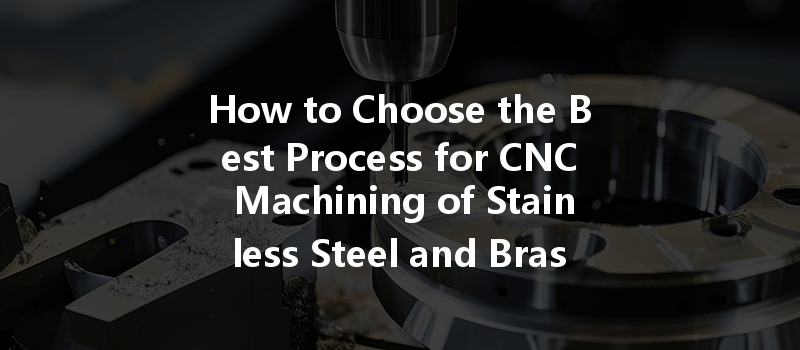In today’s fast-paced manufacturing landscape, precision and efficiency have never been more critical. At YL Machining, we understand that choosing the right process for CNC machining stainless steel and brass can make all the difference in terms of product quality, operational cost, and delivery timelines. This article delves deep into the intricacies of CNC machining, explaining how to select the optimal process tailored for your specific needs. We will explore the nuances of materials, the machining processes available, technological advancements, and post-processing techniques, equipping you with the knowledge necessary to make informed and effective decisions.
Understanding the Materials
Before diving into the machining processes, it is important to grasp the characteristics of the materials in question—stainless steel and brass.
Stainless Steel
Stainless steel is renowned for its corrosion resistance, durability, and aesthetic appeal. Predominantly used in various industries, it typically comprises iron, chromium, and other alloying elements. Its primary benefits include:

Brass
Brass, an alloy of copper and zinc, is valued for its excellent machinability and corrosion resistance. It’s commonly employed in the manufacturing of fittings, valves, and decorative items. Key characteristics include:
The CNC Machining Process
CNC (Computer Numerical Control) machining integrates computer software and hardware to automate and improve precision manufacturing processes. Here are several CNC machining processes to consider:
Turning is ideal for cylindrical components. The workpiece rotates while a cutting tool moves along its length, removing material to achieve desired dimensions.
Advantages:
Disadvantages:
Milling utilizes rotating cutting tools to remove material from a stationary workpiece. It is suitable for more complex geometries, making it an excellent choice for intricate designs.
Advantages:
Disadvantages:
Drilling is a straightforward process of creating holes in a material. It can be incorporated into turning or milling operations.
Advantages:
Disadvantages:

This non-traditional machining method uses electrical sparks to erode material. It is particularly effective for hard metals.
Advantages:
Disadvantages:
Assessing Process Suitability for Stainless Steel and Brass
When choosing between machining processes for stainless steel and brass, several factors come into play, including material properties, required tolerances, and production volumes.
Factors to Consider
Technological Advancements in CNC Machining
The CNC machining landscape has evolved significantly over recent years, introducing several advancements that enhance efficiency and precision.
Utilizing high-speed steel or carbide tools requires an understanding of how to optimize their performance. These tools improve cutting efficiency and extend service life, reducing downtime and replacement costs.
Adaptive tooling allows for real-time adjustments during the machining process. These systems analyze cutting conditions and can adjust speeds or feeds dynamically, ensuring optimal performance throughout production.
Automation brings both speed and efficiency, streamlining production by minimizing human intervention. Automated loading and unloading systems can significantly reduce labor costs while maintaining high output rates.
Post-Processing Considerations
After machining, parts often require additional procedures to enhance performance and aesthetic properties. Key post-processing methods include:
Making the Right Choice
Choosing the best process for machining stainless steel and brass requires a clear understanding of both the material properties and the intended application of the final product. Here are some recommendations based on applications:
Application Examples:
The decision-making process for choosing the best CNC machining method for stainless steel and brass demands careful consideration of multiple factors such as material properties, design complexity, production volume, cost implications, and post-processing needs. The goal is to harmonize these dimensions to maximize efficiency, precision, and quality.
At YL Machining, we strive to stay ahead of industry trends, offering versatile and adaptive solutions tailored to fit your specific requirements. The world of CNC machining may be intricate, but with careful planning and diligent execution, you can navigate through it successfully, resulting in exceptional products that meet and exceed expectations.
In this rapidly evolving industry, let’s work together to harness the full potential of CNC machining technology and unleash creativity in manufacturing like never before.




